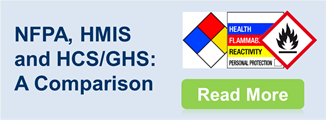Overview of Chemical Regulations in Korea
Updated on 21 Nov 2014 by Admin. Disclaimer
In Korea, many ministries are involved in managing chemicals to protect human health or the environment from the hazard of chemicals. Chemicals are regulated by various laws based on their uses and hazard properties. The table below summarizes some main chemical control laws and corresponding authorities in Korea.
| Products | Laws & Authority |
|---|---|
| Industrial Chemicals |
|
| Cosmetics |
|
| Pharmaceuticals |
|
| Food additives |
|
| Pesticides |
|
| Ozone layer depleting substances and radioactive substances etc. |
|
In this topic, we will focus on industrial chemical laws.
The Act on Registration and Evaluation, etc of Chemical Substances
The Act on Registration and Evaluation, etc of Chemical Substances(K-REACH) was promulgated on 22 May 2013 by the Ministry of Environment in South Korea and it comes into force on 1 Jan 2015. The Act is also well-known as Korea REACH due to its similarity to the EU REACH regulation.
Under K-REACH, any person who intends to manufacture or import a new chemical substance or at least one ton per year of a designated existing chemical substance subject to registration shall register the chemical substance before he/she manufactures or imports. K-REACH also sets out requirements for companies to report the volume and uses of substances they manufacture/import and notify products containing hazardous chemicals substance.
Chemical Control Act(CCA)
The chemicals control act(previously toxic chemicals control act) passed national assembly in May in 2013 and it comes into force on 1 Jan 2015. It is a new law focusing on chemical accident prevention and reporting. Under CCA, any person who intends to set up and operate toxic chemicals handling facilities shall prepare Off-site consequence analysis report that evaluates the impact of a potential chemical accident on the surrounding environment and population.
CCA also requires that any person who handles accident prone chemicals in excess of a certain amount prepare and submit a contingency plan every five years.
Occupational Safety and Health Act(OSHA)
OSHA regulates the use of chemicals in workplace with a goal of protecting workers from exposure to hazardous chemicals. Like K-REACH, OSHA requires that any person who manufactures or imports new substances investigate the hazards of new substances and submit the investigation report to the Ministry of Employment and Labor(Article 40). Usually companies submit new substance notifications to the National Institute of Environmental Research(NIER) of the Ministry of Environment who then share hazard information with the Ministry of Employment and Labor. One difference is that OSHA requires some hazard data for the registration of new substances(0.1~1t/y) while the registration of new substances(0.1~1t/y) under K-REACH does not require any hazard data before 2020.
Under OSHA, any person who transfers or supplies a chemical substance or preparation shall classify the chemical according to national classification standards, prepare a SDS and label it properly if classification criterion is met(article 41).
In addition to that, OSHA gives the Ministry of Employment and Labor the authority to set exposure limits for harmful agents, many of which are chemicals.


